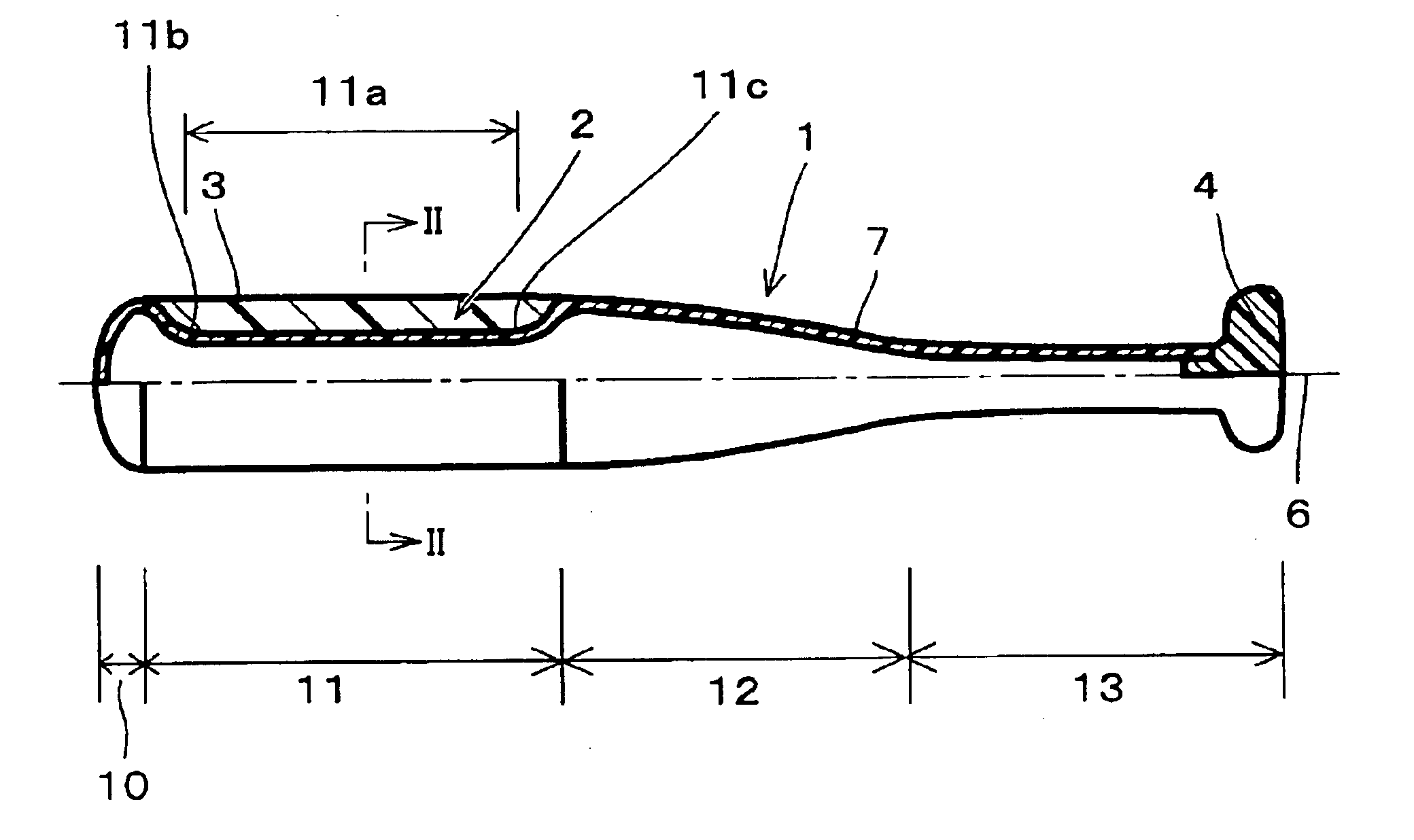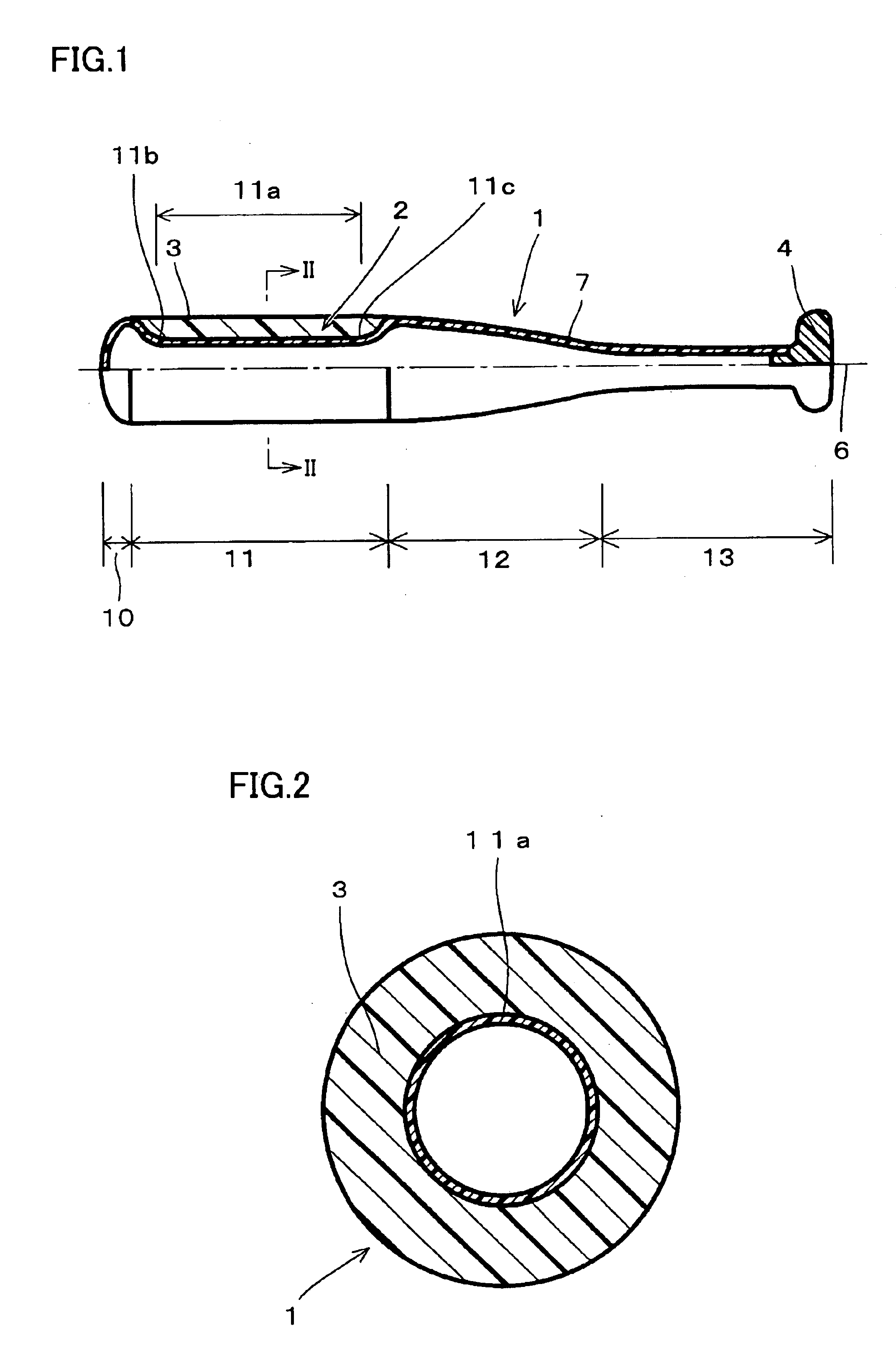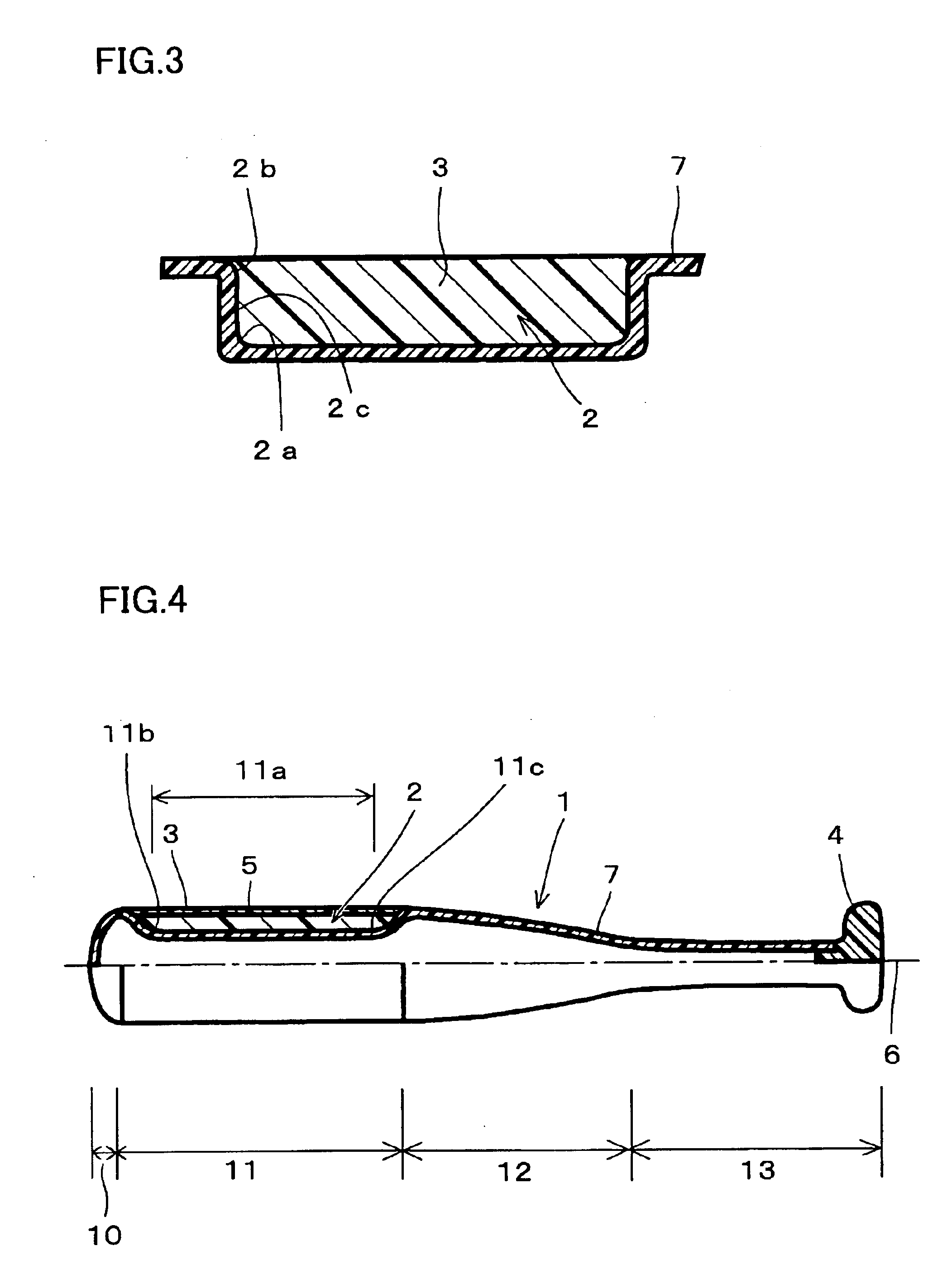Baseball or softball bat, bat base member and elastic sleeve
a elastic sleeve technology, applied in the field of baseball or softball bat rebound property improvement, can solve the problems of large bat mass and difficult design, and achieve the effect of good durability
- Summary
- Abstract
- Description
- Claims
- Application Information
AI Technical Summary
Benefits of technology
Problems solved by technology
Method used
Image
Examples
first embodiment
(First Embodiment)
Referring to FIGS. 1 and 2, a first embodiment of a bat according to the present invention will be described.
A bat according to the present invention has a depression of a ball-hitting portion integrally coated with an elastic body that has a largest rebound property confirmed in various experiments. As shown in FIGS. 1 and 2, a baseball or softball bat 1 includes a tip portion 10, a ball-hitting portion 11, a tapered portion 12 and a grip portion 13. A bat base member 7 constituting bat 1 is provided with a depression 2 in a portion to be ball-hitting portion 11. Desirably, the depression is formed with a ball-hitting center portion 11a having an outer diameter smaller than that of ball-hitting portion 11, and an outer diameter thereof from an end 11b of a tip portion side of ball-hitting center portion 11a to the boundary of tip portion 10 and an outer diameter from an end 11c of a tapered portion side of ball-hitting center portion 11a to the boundary of tapered...
second embodiment
(Second Embodiment)
Referring to FIGS. 5 to 7, a second embodiment of a bat according to the present invention will be described.
As shown in FIGS. 5 to 7, bat 1 basically has the same structure as the one shown in FIG. 4 except for the shape of depression 2. In other words, depression 2 may include a center portion bottom wall 8 as a small outer diameter portion of ball hitting center portion 11a, distance of which from central axis 6 of baseball or softball bat 1 is smaller than distance R1 (see FIG. 7) from central axis 6 to an outermost circumferential portion of ball-hitting portion 11; an end portion region 15 as a stepped portion bottom wall (see FIG. 5), distance of which from central axis 6 is larger than distance R2 (see FIG. 7) from central axis 6 to center portion bottom wall 8 of ball-hitting center portion 11a and is smaller than distance R1 from central axis 6 to outermost circumferential portion 9 of ball-hitting portion 11, and positioned at both ends of ball-hitting ...
example 1
In order to verify the effect of the bat according to the present invention shown in FIGS. 1 and 2, an actual hitting test was conducted.
A rubber-baseball bat 1 used in the test as an example of the bat according to the present invention shown in FIGS. 1 and 2, was hollow and made of fiber-reinforced plastic. In the bat, a tip portion 10, a ball-hitting portion 11 having a depression 2, a tapered portion 12 and an outer shell of a grip portion 13 (a bat base member 7) were formed with internal pressure molding. A grip end 4 separately formed with a synthetic resin was inserted and adhered to the end of grip portion 13. After sandblasting depression 2 of ball-hitting portion 11, the bat was cast molded, using a mold designed to integrally coat depression 2 with elastic body 3. Here, for elastic body 3, a polyurethane foam having JIS C hardness of 43, specific gravity of 0.35 and elasticity modulus (tensile stress in 300% elongation) of 1.23 MPa was used.
Outer diameter of ball-hitting...
PUM
 Login to View More
Login to View More Abstract
Description
Claims
Application Information
 Login to View More
Login to View More - R&D
- Intellectual Property
- Life Sciences
- Materials
- Tech Scout
- Unparalleled Data Quality
- Higher Quality Content
- 60% Fewer Hallucinations
Browse by: Latest US Patents, China's latest patents, Technical Efficacy Thesaurus, Application Domain, Technology Topic, Popular Technical Reports.
© 2025 PatSnap. All rights reserved.Legal|Privacy policy|Modern Slavery Act Transparency Statement|Sitemap|About US| Contact US: help@patsnap.com



